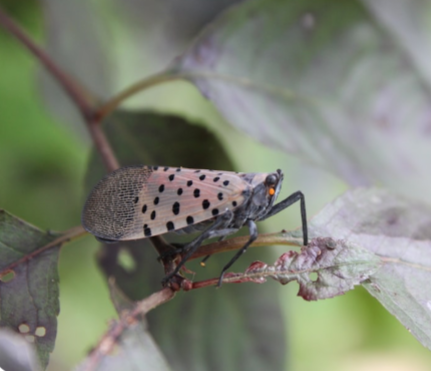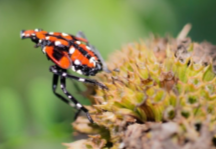
As summer approaches, a new threat emerges once again. An invasive insect from Asia, the Spotted Lanternflies, is set to return, posing a danger to the environment. With the warming weather, their eggs will hatch, impacting agriculture in the United States. The upcoming return of the Spotted Lanternfly is concerning as they lack natural predators in the U.S., leaving humans as the only defense against them.
Initially discovered in Pennsylvania in 2014, the Spotted Lanternfly most likely spread through egg masses on planes and other vehicles. Over time, it has extended its reach to surrounding states, with New England and California reported to have the highest concentration, according to Stop SLF. Last summer, the U.S. government initiated a campaign aimed at eradicating these insects, emphasizing the need for population control. This summer, the presence of Spotted Lanternflies is expected once more, emphasizing the need for human intervention.
The New York State Department of Environmental Conservation (NYSDEC) notes that both adult and nymph Spotted Lanternflies feed on over 70 plant species. Their feeding causes stress to plants, making them susceptible to diseases. Moreover, these insects secrete a sticky substance called honeydew, attracting additional insects and disrupting outdoor activities for humans. The honeydew fosters mold growth, which interferes with plant photosynthesis, potentially affecting agricultural productivity. Additionally, the sticky residue can inconvenience humans by clinging to their hair, clothes, and belongings, inviting swarms of insects into homes, according to the NYSDEC.
Given the environmental repercussions, it is crucial to familiarize oneself with the appearance of Spotted Lanternflies and their nymph stages. Resting adults exhibit brownish wings with spots that become more clustered towards the wingtips. In flight, adults display the same wing pattern, with the second set of wings showcasing a distinctive red color with black and white tips. The first nymph stage, known as a first instar nymph, resembles a jet black beetle with white spots. As it progresses to the fourth instar nymph stage,

it acquires a red pattern atop its black body while retaining the white spots.
The presence of Spotted Lanternflies poses a significant threat to the environment, warranting human intervention to eradicate this invasive pest from America. It is likely that the government will relaunch the extensive program “If You See It, Stomp It” this summer, emphasizing the severity of the issue. The government’s involvement underscores the growing problem, emphasizing the importance of swift action when encountering these insects.




















